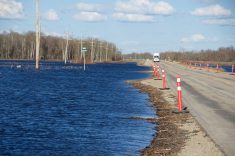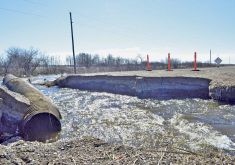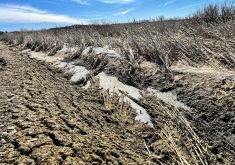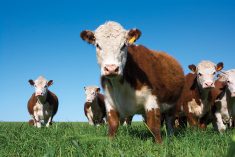Spring flood risk is back and it’s time for at-risk ranchers to implement plans for accessible feed and livestock assistance if water starts to rise.
Options may include safety in enclosed structures, higher pasture ground, evacuation to higher ground or relocation to local alternatives such as an auction barn or fairgrounds.
“Beef cattle out on pasture are especially susceptible to displacement by flooding,” warned Miranda Meehan, livestock environmental stewardship specialist with North Dakota State University.
Read Also

Mazergroup’s Bob Mazer dies
Mazergroup’s Bob Mazer, who helped grow his family’s company into a string of farm equipment dealerships and the main dealer for New Holland machinery in Saskatchewan and Manitoba, died July 6 from cancer.
“Plans should be made ahead of a potential disaster, with consideration given to pens, loading facilities, transportation, evacuation routes and final destination of livestock.”
Flood waters often prevent ranchers from reaching feed supplies, either directly or through damage to roads and feed assistance might not be available during a flood crisis.
NDSU and University of Minnesota sheep specialist Travis Hoffman highlighted the need to plan for adequate grain supplies either at or near where animals are calving or kidding. That will help ensure lactating animals get proper nutrition.
“Please consider that clean water can be a challenge,” Meehan added. “Flood waters may be reservoirs for bacteria, viruses and parasites. Securing clean drinking water shortly after a flood event for rescued livestock assures adequate hydration and improved animal health.”
Even if livestock themselves are not at risk, there is the matter of manure. If a manure stacking area is flooded, producers may need to build a berm to prevent nutrient-dense runoff.
Once the flood recedes, producers will also want to check water sources that might have become contaminated and be wary of wet and potentially spoiled feed.
Post-flood management should also include a physical evaluation of animals. Flood waters with current can cause stress and muscle weakness and debris can cause injury.



















